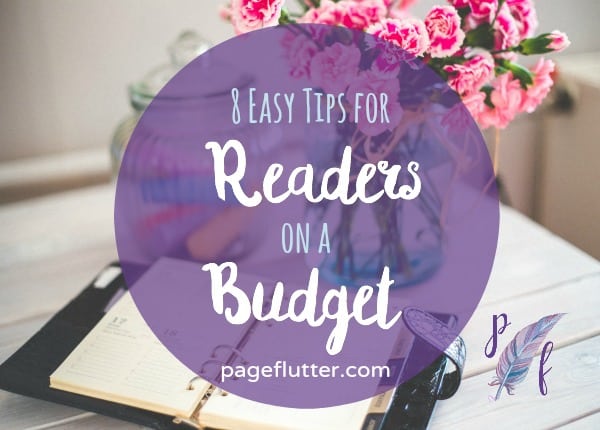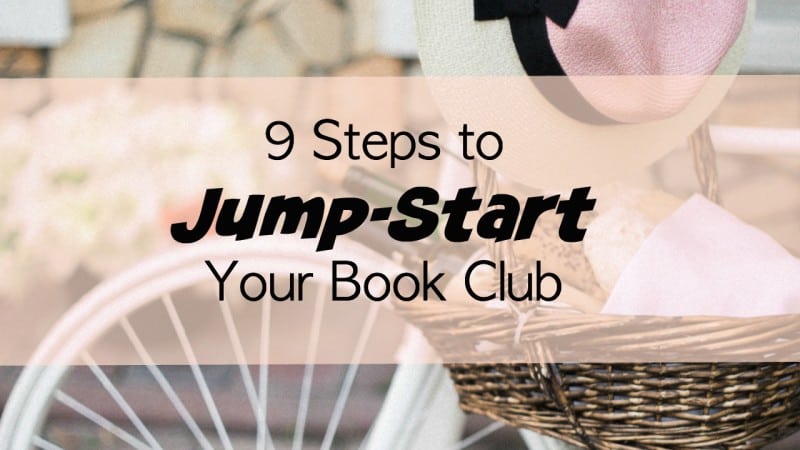9+ mental health bullet journal ideas I use to improve my well-being. How to get started with mental health journaling.
When I was at the height of depression and anxiety I did something that changed my life: journaling.
It sounds dramatic, but it did save me.
After falling in love with it, I took a degree in Writing for Therapeutic Purposes. I used what I’d learned to start a bullet journal for mental health and I’m going to share with you everything I know.
Some are tips you may have heard before, but others go a little deeper and may help you process trauma as they did for me.
DISCLAIMER:
Feeling uncomfortable while doing some of these ideas is normal. It’s releasing trapped emotions. You may experience temporary feelings of sadness for a few days afterward.
However, if at any point you feel you are going too deep into something and you’re experiencing highly intense emotions, please stop. You may be processing trauma that needs guidance from a professional, such as a therapist.
Please remember that mental health bullet journaling is not a replacement for professional help, therapy sessions or prescribed medication.
What Is A Mental Health Bullet Journal?
A mental health bullet journal is a place you can record your thoughts and feelings and support your mental well being.
Some ways include: organizing your day, wellness trackers or a mood tracker, expressing your feelings through a brain dump or morning pages, writing about past events, or practicing gratitude. But there are plenty of ways you can use a bullet journal for mental health, which I’ll share below.
What Are The Benefits Of Keeping A Mental Health Bullet Journal?
Having a safe space to express yourself without fear of judgment is essential to caring for your mental health. Writing out your thoughts and feelings can lower stress levels and reduce anxiety and depression, because trapped emotions can leave your body
It can become an important part of your self care routine, and can make you more self-aware because you read and reflect on your inner experiences. It can also give you a new perspective on how you are truly feeling and what is going on in your life.
How Do I Start A Mental Health Bullet Journal?
You can start by practicing gratitude, writing about how you’re feeling, past events, or tracking your moods.
Trackers are one easy way to get started with a mental health journal. A sleep tracker, medication tracker, water tracker, symptom tracker, mood tracker, trigger tracker, or exercise tracker can all help you identify patterns, and spot what behaviors or routines lead to a good day or a bad day.
You can also use expressive writing in your journal, to brain dump your thoughts and worries.
Begin with the idea that feels the most appealing. You can always change how you journal.
Read on for some of my suggestions to start your mental health bullet journal, which are ideas I’ve used myself in my personal journey.
9 Ideas For Your Mental Health Bullet Journal
Bullet Journal Ideas To Process Emotions
Use A Compassionate Voice in Bullet Journal Entries
When you journal, you process and better understand your feelings and the whirlwind of thoughts in your head.
You can gently guide yourself through difficult emotions and life events by writing with a compassionate voice.
A compassionate voice comforts you, validates your feelings, and reflects on what you are saying.
For example, if you write about an emotionally upsetting experience, your compassionate voice might say, ‘I understand that must be difficult.’ ‘How did that make you feel?’ or ‘It sounds like you’re angry.’
To implement a compassionate voice in your journaling, I suggest trying to use two different colored pens. Use one color to write what you are currently thinking, and another color for the compassionate voice to write how you would respond if you were a kind friend or listener concerned about your wellbeing.
Different colored pens helps you clearly distinguish negative self-talk from a nurturing inner voice.
For example, you might start writing with one color, ‘I feel so angry and low at the moment. I can’t do anything right, and I don’t know what to do.’
Switch to the second pen for your compassionate voice, then kindly respond to yourself. For instance, ‘That sounds difficult for you.’
I’ve written down some compassionate journal prompts and included an example from my bullet journal spreads.
Compassionate prompts for mental health journaling:
- ‘That sounds…’ (e.g., difficult, that you’re angry, like you need a break, etc.).
- ‘How does that make you feel?’
- ‘I notice that…’ (e.g., you say frustrated a lot, you are very hard on yourself.’)
- ‘I get the sense that…’ (e.g., this experience hurt you, you’re struggling, you’re exhausted, etc.).
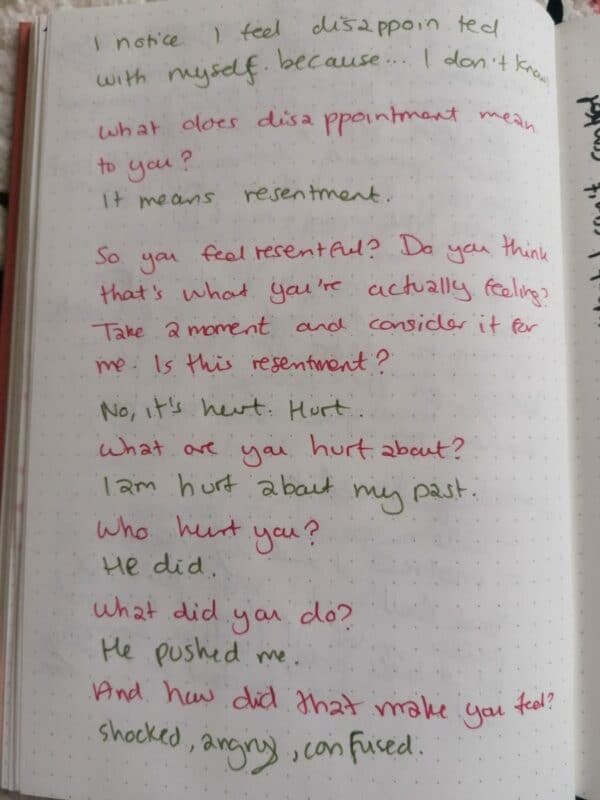
Get In Touch With Your Feelings
People who are more in touch with their feelings have better mental health and better physical health.
Use a mix of positive and negative emotions when you write to help you get in touch with yours.
Positive emotions are words such as ‘happy, joyful, and excited,’ and examples of negative words are ‘sad, angry, and frustrated.’
Do not fall into the trap of using only positive words because it shows that you are not exploring your entire spectrum of emotions and might reject or ignore complicated feelings.
However, try not to focus on just negative words either. People who use only negative words may have lower mental health because they vent their feelings without expressing kindness.
Those who have a healthy balance of both negative and positive words are connected to their emotions and more accepting of themselves no matter what they feel.
Ask Yourself What An Experience Has Taught You
Reflecting on what you’ve written is a way to understand yourself better and see the experience in a positive light. Examples of reflection include:
- ‘What I’ve learned from this experience is…’ (e.g., what my triggers are, why I respond with anger, how to be a better mom.)
- ‘I understand now that…’ (e.g., if my partner is quiet, it doesn’t mean I did anything wrong, it’s my responsibility to look after my health, etc.)
- ‘I realize…’ (e.g., I jumped to conclusions, they weren’t trying to offend me, I struggle still to see this person, etc.)
- ‘Next time I will…’ (e.g., take a deep breath before responding, ask a friend to come to a party with me, etc.)
You can reflect on your day, your week, just after an event, or even something that happened to you a while ago.
Simple Exercises For Your Mental Health Bullet Journal
Write Your Strengths And Achievements
When struggling with depression or a low mental state, it can be easy to think that you’re a failure and you haven’t achieved anything. Make a list of your proudest moments, achievements, or strengths, and keep it somewhere when you need a pick me up.
It can be anything at all from your own experience. For example, ‘I was brave enough to ask for support, change jobs, and contact an old friend.’ You can list as many as you want!
If you track self care ideas somewhere in your journal, add “reviewing your strengths and achievements list” to the list of ideas!
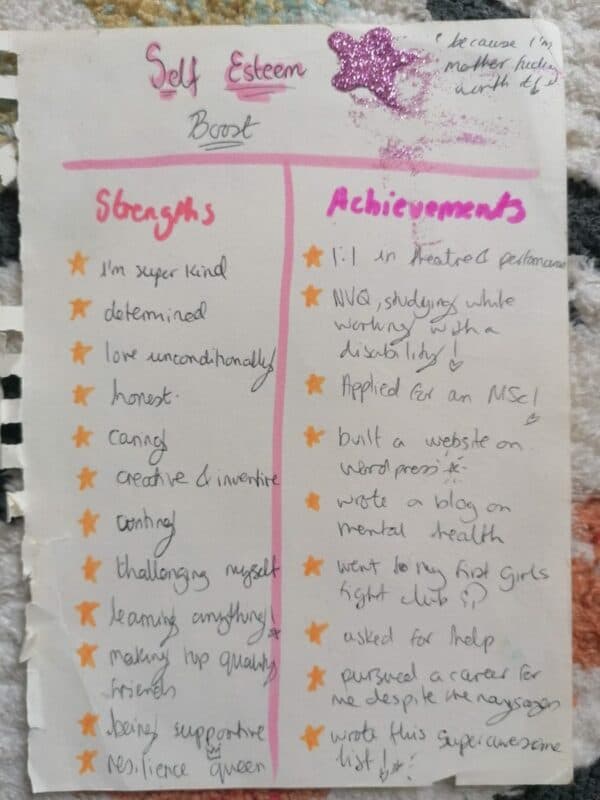
Gratitude Log
Expressing gratitude is an instant dopamine release (your happy hormone). That’s because it induces positive feelings, such as feeling thankfulness and appreciation. Over time, practicing gratitude rewires a negative mindset, so you will nearly always see the silver lining.
Write three things you feel grateful for every morning or evening to create a basic gratitude log. Make sure to connect to your emotions when you identify things you’re grateful for. For example, ‘I am grateful for my house because it makes me feel safe.’ Use gratitude prompts if you’re not sure where to start.
If you want to go further, you can get more into gratitude journaling or even join the PageFlutter 30-day gratitude challenge!
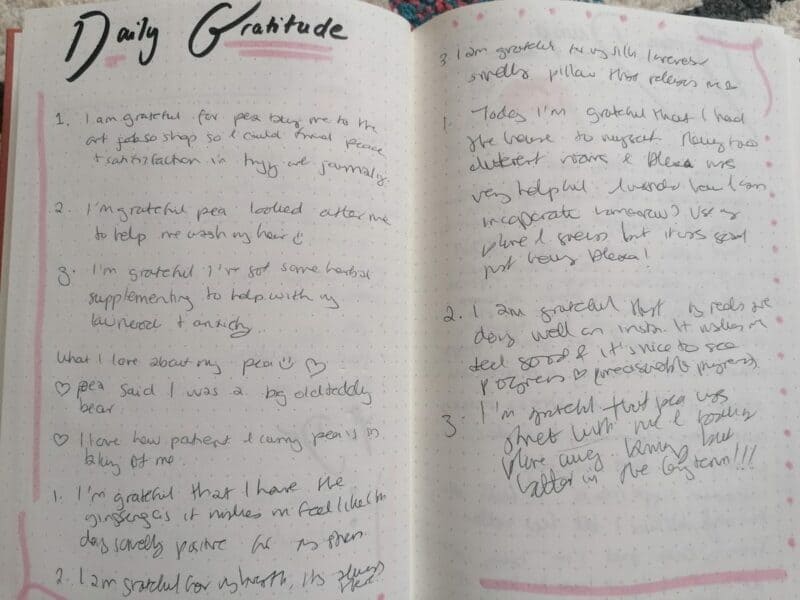
What You Can Control Vs. What You Can’t Control
Anxiety and depression can result from worrying or focusing on things you can’t change. An easy way to separate what’s in your control vs. what isn’t is to write a Circle of Influence.
In the center of the page, draw a circle. In that circle, write a list of everything within your control. For instance, changing jobs, doing meditation, and asking for support. Outside of the circle, write everything outside of your control. For example, the weather, the past, or whether someone hires you after an interview.
You can keep it as it is or cut out the circle and throw away the outside, leaving you with everything within your control and giving yourself permission to stop keeping track of or worrying about things you can’t control.
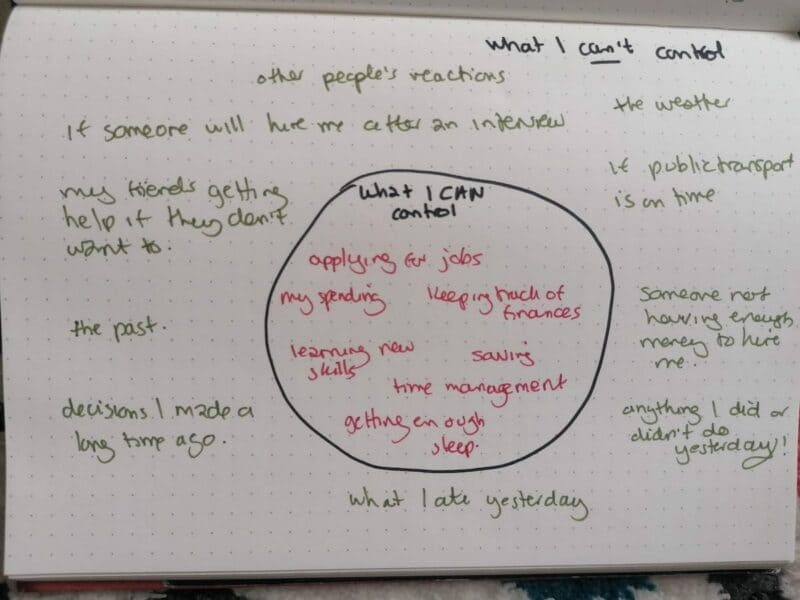
Self Care Day
One of my favorite small activities for mental health is ‘self-care day’ every day of the week. I don’t mean getting a massage seven days a week, but writing at the top of the page ‘Self-Care Monday, Self-Care Tuesday,’ etc.
You can then create a list of everything you’ve done that day for your mental health.
For instance, good habits like ‘ate a healthy lunch, or brave acts like ‘replied to an email I’ve been avoiding, etc.’
You can build up the list throughout your day so you’ll have a clear and unbiased perspective of things you’ve done to care for yourself.
You can also reference a habit tracker if you use them, to see how you’re doing on self care habits like sleep, water, and exercise.
These Self Care spreads can help identify what activities or habits help or hinder your mental health, and make it easier to spot patterns via your bullet journal.

Worry Window
Constantly worrying about things can induce anxiety, anxiety attacks, and panic. However, dedicating time to express your worries acknowledges them whilst keeping them contained.
Set a five-minute timer at a certain point in the day and spill all your worries onto the page in a free flowing brain dump during those couple of minutes.
You can expand your worry window to more than five minutes and do it a few times a day if it helps.
Once you close your journal, you might find it’s easier to focus on the rest of your day.
FAQs About Bullet Journaling For Your Mental Health
Is a Bullet Journal for Mental Health Good For You?
Using a journal for mental health can be an incredible tool. Writing down your thoughts and feelings can reduce internal negative self-talk and encourage self-care and a positive mindset.
One reason for mental health issues is rejecting and repressing emotions. Using a bullet journal for mental health allows feelings to surface, relieving stress and increasing your well-being.
Emotions can fester into physical ailments when you fail to acknowledge your feelings. For example, if you never admit that you feel overwhelmed, then you won’t allow yourself to relax and recover from burnout. Anger can manifest into resentment, pushing your nervous system into a constant state of fight or flight.
You may experience sleepless nights and irritation, which can then increase your risk of cancer, strokes, and heart disease.
Bullet journaling is a helpful tool for emotional self-care and can help relieve symptoms of mental illness.
Does Bullet Journaling Help With Anxiety?
Bullet journaling may help with anxiety because it lets you see your fears and worries on paper.
The process of writing helps organize thoughts, better understand your feelings, and regulates your nervous system. What you feel or think is no longer stored in your mind and body. This may allow you to either release feelings of panic, calm yourself down using mental health practices, or gain healthy control of anxiety by taking action on things that are worrying you.
Keeping A Bullet Journal Is A Fantastic Way To Improve Your Physical and Mental Health
Bullet journaling for your well-being helps reduce stress, anxiety, and depression and even improve physical health. These ideas go far beyond mood trackers, and are only a few ideas to try, so feel free to experiment and have fun!
If You Enjoyed This Article, You May Also Like:
131 Gratitude Journal Prompts to Use in your Journaling Practice
How to Start a Gratitude Journal (& Why You Should!)
50+ Habits to Track to Improve Health, Happiness & Productivity
41 Morning Routine Ideas (& How to Journal Your Way to a Morning Routine that Sticks)



